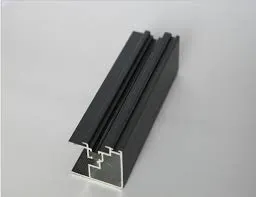pocket door roller replacement
Pocket Door Roller Replacement A Step-by-Step Guide
Pocket doors are an elegant solution for saving space in your home, but their functionality can be compromised if the rollers wear out or break. If you've noticed your pocket door sticking, derailing, or becoming difficult to open and close, it may be time to replace the pocket door rollers. This guide will walk you through the process of roller replacement, ensuring your pocket door operates smoothly once again.
Tools and Materials Needed
Before you begin the replacement process, gather the necessary tools and materials
1. New Pocket Door Rollers Ensure they are compatible with your existing door. 2. Screwdriver Typically, you will need a Phillips head or flat head, depending on your door hardware. 3. Pliers For removing cotter pins or securing new rollers. 4. Measuring Tape To ensure the correct sizing of the new rollers. 5. Level To check that your door is hanging straight. 6. Support Plywood To support the door while you work on it.
Step-by-Step Replacement Process
1. Remove the Pocket Door Start by sliding the pocket door out of the pocket. You may need to pull the door completely out if it is removable. Some designs allow you to simply lift the door up and out of the track.
2. Inspect Existing Rollers Before replacing the rollers, take a moment to inspect the old ones. Check for any damage or wear and note the type and size. This will help ensure you purchase the correct replacement rollers.
pocket door roller replacement

3. Remove Old Rollers Using your screwdriver, unscrew the old rollers from their mounting brackets. If the rollers are secured with screws, simply loosen and remove them. For those secured with cotter pins, use pliers to pull out the pins.
4. Install New Rollers Position the new rollers in the same location as the old ones and secure them using the screws or cotter pins from the previous rollers. Ensure they are tightly fastened, as a loose roller can lead to problems later on.
5. Reinstall the Pocket Door With the new rollers attached, carefully slide the pocket door back into its track. If the door feels heavy or awkward, consider having someone assist you to avoid damaging the wall or door.
6. Test the Door Once the door is in place, slide it open and closed several times to confirm that it operates smoothly. If the door is not moving freely, check the alignment and ensure that your rollers are adjusted correctly.
7. Adjust If Necessary Utilize the level to check if the door hangs straight. If needed, make minor adjustments to the rollers or the door hanging brackets.
Conclusion
Replacing pocket door rollers is a relatively straightforward task that can significantly improve the functionality of your door. With the right tools and a little bit of patience, you can restore your pocket door's smooth operation in no time. This not only enhances the aesthetic of your space but also adds to the overall convenience of your home. If you encounter any difficulties during the process, do not hesitate to consult with a professional for assistance.
-
Wrought Iron Components: Timeless Elegance and Structural StrengthNewsJul.28,2025
-
Window Hardware Essentials: Rollers, Handles, and Locking SolutionsNewsJul.28,2025
-
Small Agricultural Processing Machines: Corn Threshers, Cassava Chippers, Grain Peelers & Chaff CuttersNewsJul.28,2025
-
Sliding Rollers: Smooth, Silent, and Built to LastNewsJul.28,2025
-
Cast Iron Stoves: Timeless Heating with Modern EfficiencyNewsJul.28,2025
-
Cast Iron Pipe and Fitting: Durable, Fire-Resistant Solutions for Plumbing and DrainageNewsJul.28,2025
-
 Wrought Iron Components: Timeless Elegance and Structural StrengthJul-28-2025Wrought Iron Components: Timeless Elegance and Structural Strength
Wrought Iron Components: Timeless Elegance and Structural StrengthJul-28-2025Wrought Iron Components: Timeless Elegance and Structural Strength -
 Window Hardware Essentials: Rollers, Handles, and Locking SolutionsJul-28-2025Window Hardware Essentials: Rollers, Handles, and Locking Solutions
Window Hardware Essentials: Rollers, Handles, and Locking SolutionsJul-28-2025Window Hardware Essentials: Rollers, Handles, and Locking Solutions -
 Small Agricultural Processing Machines: Corn Threshers, Cassava Chippers, Grain Peelers & Chaff CuttersJul-28-2025Small Agricultural Processing Machines: Corn Threshers, Cassava Chippers, Grain Peelers & Chaff Cutters
Small Agricultural Processing Machines: Corn Threshers, Cassava Chippers, Grain Peelers & Chaff CuttersJul-28-2025Small Agricultural Processing Machines: Corn Threshers, Cassava Chippers, Grain Peelers & Chaff Cutters












